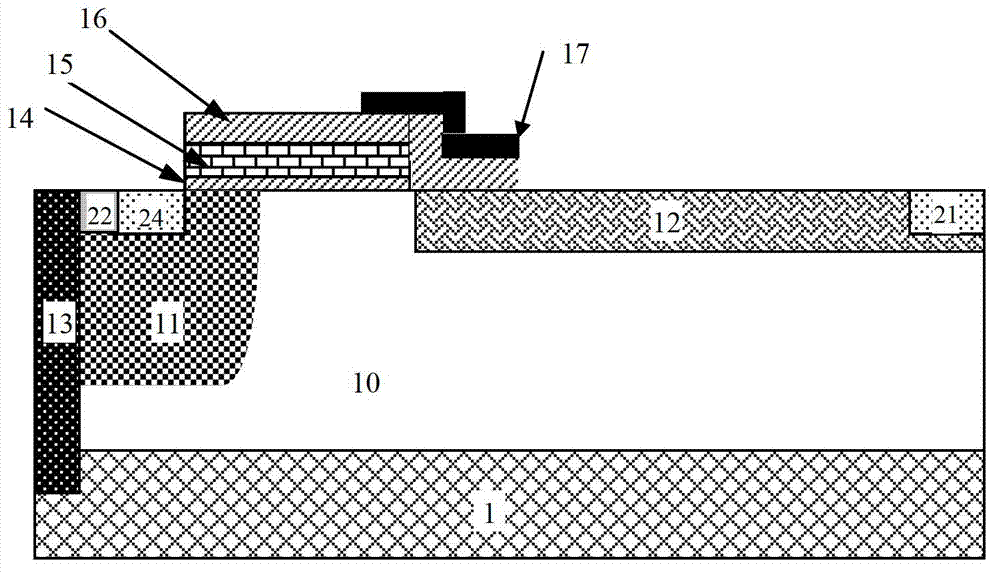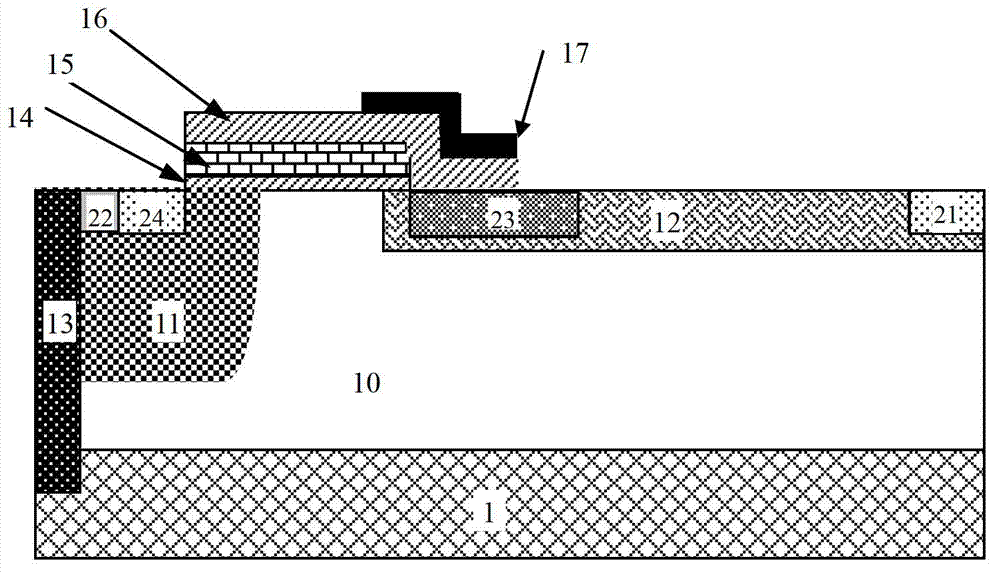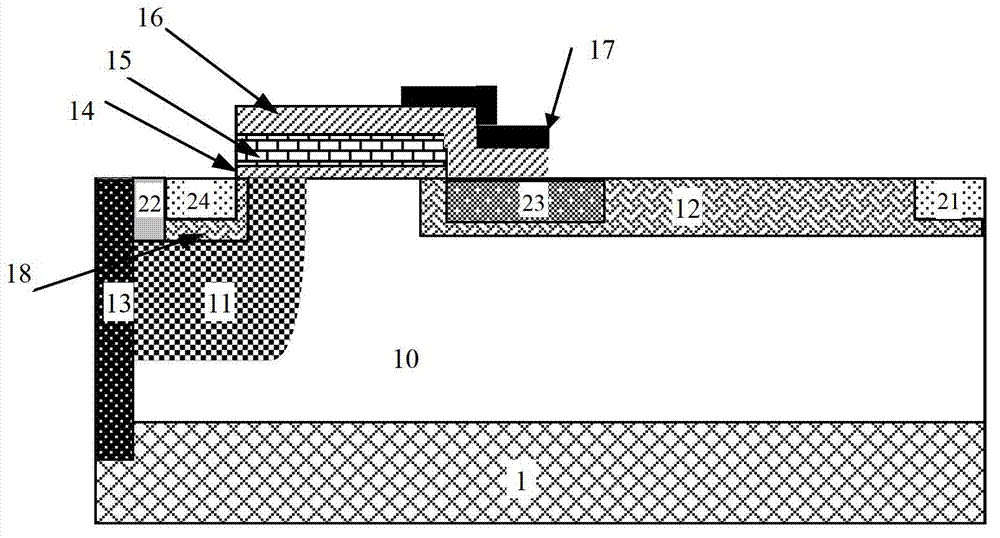Radio frequency (RF) laterally diffused metal oxide semiconductor (LDMOS) component and manufacture method
A manufacturing method and device technology, applied in the direction of semiconductor/solid-state device manufacturing, semiconductor devices, electrical components, etc., can solve problems such as large on-resistance, achieve high breakdown voltage, increase impurity concentration, and improve the effect of conduction.
- Summary
- Abstract
- Description
- Claims
- Application Information
AI Technical Summary
Problems solved by technology
Method used
Image
Examples
Embodiment 1
[0067] The structure of RF LDMOS device is as figure 2 shown.
[0068] A P epitaxy 10 is formed on the P substrate 1;
[0069] A P well 11 is formed on the left part of the P epitaxy 10, and a drain N-type lightly doped region 12 is formed on the right part, and the P well 11 is not in contact with the drain N-type lightly doped region 12;
[0070] A source terminal N-type heavily doped region 24 is formed on the upper part of the P well 11;
[0071] A drain N-type heavily doped region 21 is formed on the right of the drain N-type lightly doped region 12;
[0072] An N-type moderately doped region 23 is formed on the left part of the N-type lightly doped region 12 at the drain end;
[0073] The N-type heavily doped region 21 at the drain end is not in contact with the N-type moderately doped region 23;
[0074] The N-type impurity concentration of the N-type medium doped region 23 is less than the N-type impurity concentration of the N-type heavily doped region 21 at the ...
Embodiment 2
[0083] Such as image 3 As shown, the difference between Embodiment 2 and Embodiment 1 is that a source N-type lightly doped region 18 is formed in the lower edge and right edge of the P well 11 of the source N-type heavily doped region 24, and the source The N-type impurity concentration of the terminal N-type lightly doped region 18 is less than the N-type impurity concentration of the N-type middle-doped region 23; preferably, the N-type impurity is phosphorus or arsenic, and the N-type impurity of the N-type middle-doped region 23 is The range of N-type impurity concentration is 5E17-1E18 cm atoms per cubic centimeter, and the N-type impurity concentration range of source N-type lightly doped region 18 is 1E15-5E17 atoms per cubic centimeter.
Embodiment 3
[0085] The manufacturing method of the RF LDMOS device described in embodiment two, comprises the following steps:
[0086] 1. Growing P epitaxy 10 on P substrate 1;
[0087] 2. Forming the P well 11 in the P epitaxy 10 by P ion implantation and high-temperature well pushing (ion activation);
[0088] Preferably, the impurity of the P ion implantation of the P well 11 is boron, the implantation energy range is 30-80KeV, and the implantation dose is 1E 12 ~1E 14 Atoms per square centimeter, the temperature range of high-temperature push well is 800~1200℃, and the time is 10~200 minutes;
[0089] three. growing gate oxide 14 on P epitaxy 10;
[0090] 4. Depositing polysilicon 15 on the gate oxide 14;
[0091] 5. Define the position and area of the polysilicon gate by photoresist 105, the left end of the polysilicon gate is above the right part of the P well 11, and the gate oxide 14 and polysilicon 15 outside the polysilicon gate area are etched away;
[0092] 6. Retain ...
PUM
 Login to View More
Login to View More Abstract
Description
Claims
Application Information
 Login to View More
Login to View More - R&D
- Intellectual Property
- Life Sciences
- Materials
- Tech Scout
- Unparalleled Data Quality
- Higher Quality Content
- 60% Fewer Hallucinations
Browse by: Latest US Patents, China's latest patents, Technical Efficacy Thesaurus, Application Domain, Technology Topic, Popular Technical Reports.
© 2025 PatSnap. All rights reserved.Legal|Privacy policy|Modern Slavery Act Transparency Statement|Sitemap|About US| Contact US: help@patsnap.com



